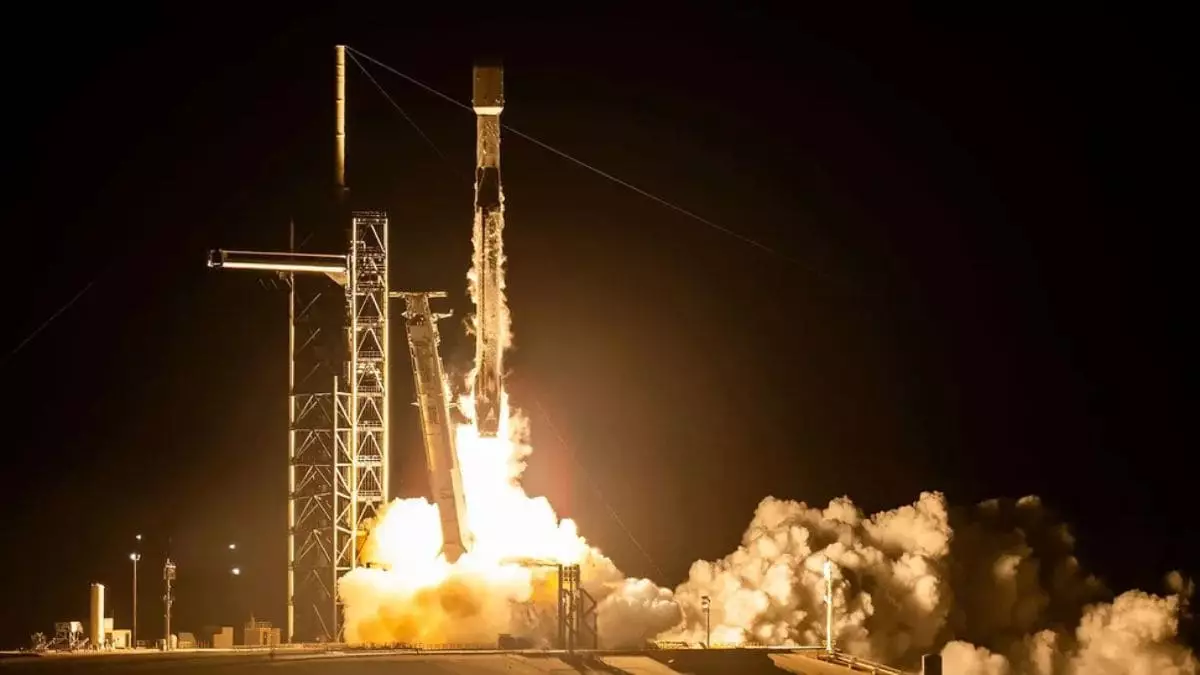SpaceX is setting its sights on an audacious milestone for 2025: 170 orbital launches, practically elevating themselves to a near-daily rhythm of liftoffs. This goal was unveiled by Anne Mason, the director of national security space launch at SpaceX, during a media call on May 28. It’s impressive—no question there—but it’s also fraught with risks. Achieving an average of nearly one launch every day represents not only a technical challenge but also raises concerns about safety, environmental impact, and the sustainability of such rapid developments in the space race.
When compared to 2020’s modest tally of just 25 launches, the leap to 170 strikes me as more of a marketing ploy than a fully thought-out operational shift. Mason celebrated the sheer velocity of these plans, particularly highlighting the upcoming GPS III SV08 satellite mission for the U.S. Space Force. While heralding operational efficiency and the reusability of Falcon rockets as game changers, one must ponder the implications of pushing the limits of space technology and human resource management to such extremes.
Operational Efficiency vs. Safety Concerns
Central to this skyrocketing ambition is the operational efficiency facilitated by the reusability of the Falcon rockets. SpaceX redefined commercial spaceflight with its innovative approach, but are we neglecting the safety element in this fervor to optimize? The success rate of rockets is impressive, and indeed, the Falcon 9 executed 132 out of 134 launches in 2023. However, history has shown that pushing for rapid advancements can lead to oversight and urgent fixes that compromise both safety and integrity.
Additionally, Mason detailed how SpaceX is producing a new Falcon upper stage every couple of days to keep pace with demand. While this level of production sounds impressive on paper, it provokes questions about the workmanship and attention to detail that might be sacrificed in order to meet tight deadlines. Space travel remains perilous, and a focus on quantity over quality could lead to catastrophic results that would tarnish the company’s nearly unblemished track record.
Starlink: The New Frontier
A remarkable two-thirds of all orbital flights in 2024 supported Starlink, the massive satellite internet constellation Central to SpaceX’s business model. With over 7,500 active satellites, it appears that SpaceX is not merely a player in the space race anymore but a dominant force. Yet this ambitious Starlink rollout comes with its own set of challenges. Increasing space debris and the ethical implications of saturating low Earth orbit with satellites must not be overlooked. We must ask ourselves: Is prioritizing internet connectivity over safe and sustainable space exploration worth the long-term repercussions for the cosmos?
By targeting an upbeat launch rate of 0.47 per day, SpaceX hopes to sustain its monopoly on space access—but at what cost? The company has launched three Starship test missions so far in 2025, and while its goals align with long-term visions for Mars colonization, the underlying question remains: Is it prudent to crown ourselves kings of the cosmos while our planetary stewardship hangs by a thread?
SpaceX’s ambitions are undoubtedly exhilarating, and its technological feats continue to capture the world’s imagination. However, in the race to be first, we must not forget the need for careful reflection on the broader implications of speed in a venture as awe-inspiring—and potentially dangerous—as space exploration.


Leave a Reply